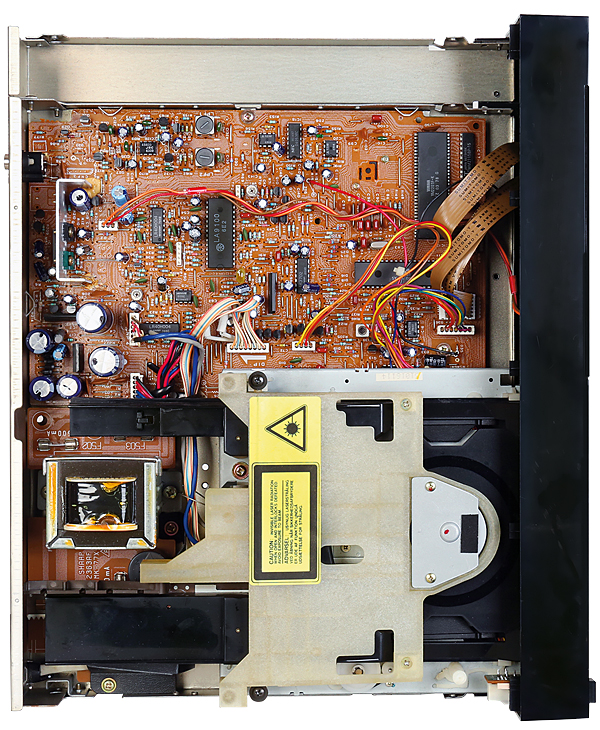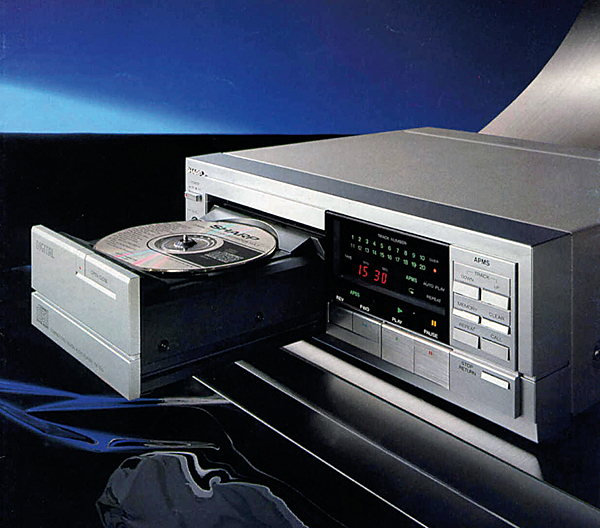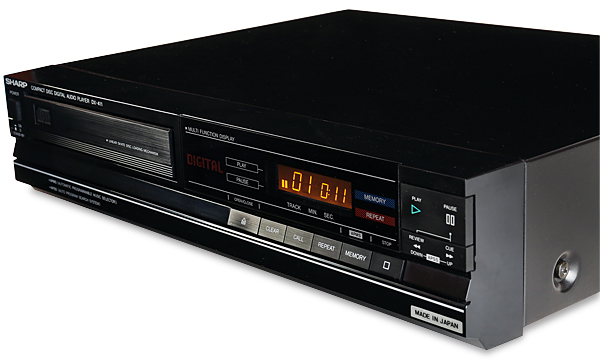Sharp DX-411H CD player Page 2
A track number cannot be chosen before the disc's TOC (Table Of Contents) is read either, so you can't drop a disc in the drawer, choose which piece you want to hear, press play and walk away like you can with the newer machines. However, such quirks are minor compared to those of some period rivals (eg, from Philips).

The use of a single time-shared DAC inevitably introduces a phase error between the two channels, increasing with signal frequency. The effect is ameliorated in the case of the DX-411H by Yamaha's digital filter [a type shared with the Aiwa DX-1500 and B&O Beogram CD50 machines, HFN May '15]. The oversampling not only halves the interchannel phase error to ~45° at 20kHz but also pushes digital alias distortions out to beyond 88.2kHz, simplifying the design of the analogue filter that follows [see PM's Lab Report, p127]. It's a technical compromise, for sure, but the DX-411H is still capable of making highly enjoyable music.
![]() Tim Listens
Tim Listens
Given that it was recommended as a test disc in the original Sharp service manual, I began my audition with a digital recording of Ravel's Boléro conducted by Daniel Barenboim [Deutsche Grammophon 400 061-2]. Here the DX-411H revealed its true nature, which was certainly different to what I was expecting. Given the time this player was launched, you'd probably imagine it to have a hard, forthright and glassy sound. Yet fortunately it doesn't. Rather, it's really rather civilised in its presentation and, if anything, a little soft in the midband. Make no mistake, the treble is still pin sharp and extremely quick, but it does not dominate or overwhelm the rest of the sound as can be the case with some early Japanese players.
Indeed, the familiar parts of the Boléro were an exhilarating listen on the DX-411H, the player delivering a sense of immediacy some supposedly more sophisticated designs can miss. Yes, when the orchestra was playing low-toned sounds it seemed that the impression of focus was lost, but any snap of percussion soon restored the illusion of a live performance taking place.

What's more, the absence of glare allowed the Ravel piece to be played at concert levels without listener fatigue. There are some players which are too wearing or strident to be enjoyable at high volume levels, but the DX-411H isn't one of them. Imaging was fair given the limitations discussed above, but a larger soundstage would have been nice. As it was, the sound was largely confined to the area between the loudspeakers, which gave it a two-dimensional quality and there was a definite sense of restricted front-to-back depth.
This lack of ambience proved to be less of a problem with simpler material. Katie Melua's 'Mockingbird Song' from her 2003 debut album Call Off The Search [Dramatico DRAMCD0002] demonstrated a convincing vocal centre presence and a big, chewy bass line. Again, less-than-perfect focus was evident around the drums and guitar, but the usual issues people complain about when it comes to the sound of early CD players (cold/sterile/hard, etc) are neatly sidestepped by the way the DX-411H has been voiced. In fact to my ears it sounded a little like a good open-reel tape recording made at 3¾ips, minus the tape hiss and with perfect speed stability, of course.
At this stage, only one question remained. What would Bucks Fizz actually sound like on the machine they put their faces to? Original CDs of the band from the period are rare to find, so a later 'Best Of' compilation [Camden 74321 446722] was pressed into service.
My favourite track 'London Town' sounded OK on the DX-411H, but I think a brighter, more energetic-sounding player might be more appropriate for this type of material. Unlike the Ravel piece, I never really became involved when listening to this recording. So we have an enigma then: a CD player advertised by a pop group which in practice is better suited to classical music.
Buying Secondhand
This whole series of Sharp CD players was well made using high quality components so reliability on the whole has been very good. This is offset by the difficulty of obtaining spare parts. The best source of type-specific replacement items (optical blocks, motors, LSI chips, etc) is a scruffy non-worker, and these presently command nominal money.

Tough Cookie
Regular maintenance tasks such as cleaning the objective lens and replacing the loading belt (use a suitably sized o-ring if you can't get a proper belt small enough) are easy, and mechanically these models are unusually tough. Some versions with a green display use an electroluminescent panel backlight, and these can fade with age to the point where the digits become hard to read. Those where the numbers are orange use LEDs and don't suffer from this.
One potential trouble spot is the DAC chip, which is surface mounted on the print side of the PCB and clamped down with screws to aid heat dissipation. This arrangement can cause the soldering of the pins to crack, resulting in an intermittent loss of sound. Careful resoldering effects a cure in many cases.
Hi-Fi News Verdict
The fact that there are still plenty of these Sharp players to be found on the secondhand market is a testament to the care taken over their construction. It was not state-of-the-art but its technology and civilised presentation made it worth the price of entry when launched. It still offers a good listen today, and is is a fine place to start if you are interested in early CD and want a piece of the action at minimal cost.























































